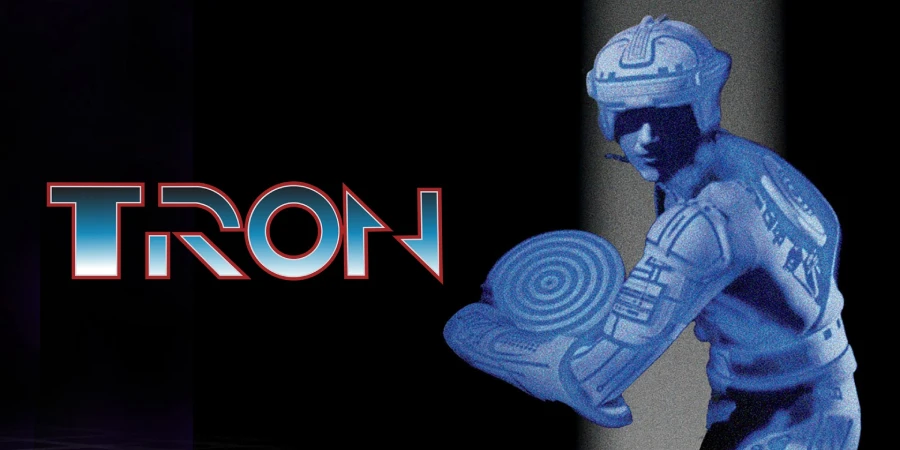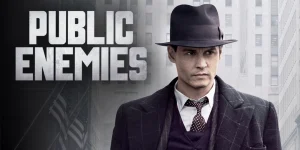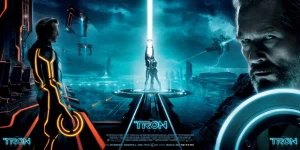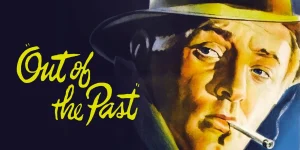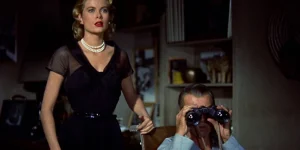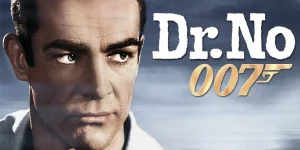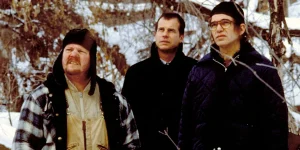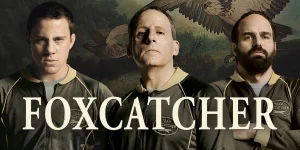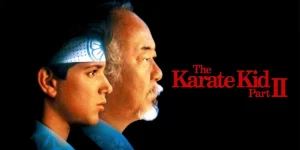Tron (1982), directed by Steven Lisberger, is one of the earliest films to explore the world inside a computer—decades before the concept of cyberspace became mainstream. With its groundbreaking visuals, synthesizer-driven soundtrack, and philosophical undertones, Tron is a cult classic that pioneered computer-generated imagery (CGI) in cinema.
Table of Contents
ToggleDetailed Summary
Introduction: Flynn and the Encom Corporation
Kevin Flynn (played by Jeff Bridges) is a former software engineer for Encom, a powerful tech corporation. After being fired, Flynn runs a video arcade while trying to hack into Encom’s mainframe to retrieve evidence that proves his former colleague, Ed Dillinger (David Warner), stole several of his video game designs and took credit for them—getting promoted to Senior Executive as a result.
Dillinger, now in control, is backed by the Master Control Program (MCP), an artificial intelligence that’s become self-aware and is absorbing other programs and functions from around the network. The MCP blocks Flynn’s access, alerting Dillinger to the intrusion.
The Digital World: Flynn Gets “Digitized”
Flynn teams up with two current Encom employees, Alan Bradley (Bruce Boxleitner) and Lora Baines (Cindy Morgan). Alan is working on a security program named Tron, designed to monitor communications between programs and the MCP.
Lora’s laser technology is used to digitize real-world objects into the computer. While sneaking into Encom to access the MCP directly, Flynn is caught and unexpectedly digitized by the MCP’s laser beam, transporting him into the digital world—a glowing, neon-lit landscape where programs appear as human-like avatars of their users.
Welcome to the Grid
Inside the system, Flynn is mistaken for a program. He meets other software beings and learns about the oppressive rule of the MCP, which enslaves programs and forces them to compete in gladiator-style games. Flynn is captured and forced to fight in a deadly disc battle and light cycle game—a fan-favorite sequence known for its visual flair.
Flynn eventually teams up with Tron, who has also been brought into the system. Tron is determined to deliver a security directive to the MCP, which would allow it to be shut down. With the help of Yori (Lora’s program counterpart), the trio embarks on a mission to bring down the digital dictatorship.
Rebellion and Discovery
As they traverse the Grid, Flynn realizes that he has special abilities within the system—since he’s a user, not just a program. He can manipulate the digital environment, “rezzing” (creating) objects and hacking the system from within.
The journey to the MCP involves dodging deadly tanks, battling Sark (Dillinger’s avatar), and avoiding data guards. Tron eventually confronts Sark and the MCP, while Flynn uses his user-powers to distract the MCP, diving into its core.
Movie Ending
In the climactic sequence, Tron launches his identity disc into the MCP’s core, successfully deleting it. Simultaneously, Flynn throws himself into the MCP, drawing its focus and weakening its defenses, allowing Tron’s attack to succeed. The MCP is destroyed, and the digital world is freed from its control.
As the system reboots, Flynn is rematerialized in the real world through the digitization laser. A printer suddenly produces the proof of Dillinger’s theft—Flynn’s original game designs. With this evidence, Dillinger is publicly exposed and presumably removed from power.
The final scene shows Flynn arriving at Encom by helicopter as the new CEO, signaling that justice has been served and the digital and real worlds are momentarily in harmony.
Are There Post-Credits Scenes?
No, Tron (1982) does not have a post-credits scene. Like many films of its era, it ends definitively and does not include teasers or follow-ups during or after the credits.
Type of Movie
Tron is a science fiction adventure film with elements of cyberpunk and fantasy, particularly in its mythological framing of users as gods and programs as followers. It’s also regarded as an early techno-thriller, mixing digital themes with corporate intrigue.
Cast
- Jeff Bridges as Kevin Flynn / Clu
- Bruce Boxleitner as Alan Bradley / Tron
- David Warner as Ed Dillinger / Sark / MCP (voice)
- Cindy Morgan as Lora Baines / Yori
- Barnard Hughes as Dr. Walter Gibbs / Dumont
Film Music and Composer
The score was composed by Wendy Carlos, a pioneer in electronic music known for her work on A Clockwork Orange and The Shining. The soundtrack blends synthesizers with traditional orchestral elements, reflecting the film’s mix of digital and analog worlds. Music by Journey is also featured, adding to the 1980s tone.
Filming Locations
Most of Tron was filmed on sound stages in Burbank, California, with much of the environment created through backlit animation, early CGI, and rotoscoping. While not shot in real-world locations, the stylized digital environment was revolutionary and became iconic for its stark, high-contrast aesthetic.
Awards and Nominations
- Nominated for Best Costume Design and Best Sound at the 1983 Academy Awards.
- Won several technical and innovation awards in the years following its release.
- Notably, the Academy did not nominate the film for Best Visual Effects because they considered the use of computers “cheating”—a decision now regarded as short-sighted.
Behind the Scenes Insights
- Tron was one of the first major films to use extensive CGI, though most of the film was still hand-animated due to limitations in computing power.
- Disney was initially hesitant about the film, thinking it would be too niche or too complicated for general audiences.
- Jeff Bridges had to act much of the time against black backgrounds, with only vague indications of what would later be added in post-production.
- Bruce Boxleitner originally thought the project was too abstract, but later praised its originality.
- The light cycle scenes combined CGI with rotoscoping and physical modeling—a massive achievement in 1982.
Inspirations and References
- Inspired by the rise of video games and computer culture in the late 1970s and early 1980s.
- The term “Tron” was derived from the command “trace on” in debugging.
- Influenced by early arcade games like Pong and Space Invaders.
- The film reflects mythological structures, with users as deities and programs as loyal (or rebellious) followers.
Alternate Endings and Deleted Scenes
There are no widely known alternate endings, but some scenes were removed for pacing. One extended scene involved more exposition from Dumont (the system’s gatekeeper) about the structure of the digital world, which was ultimately cut.
Book Adaptations and Differences
A novelization was released alongside the film. It goes deeper into the characters’ inner thoughts and the philosophy behind users and programs. The book presents the MCP’s development in more detail and explores Flynn’s awe at discovering his power within the system.
Memorable Scenes and Quotes
Key Scenes
- Flynn’s digitization into the computer world.
- The light cycle battle—one of the most iconic scenes in early CGI history.
- Tron’s final showdown with the MCP.
- Flynn manipulating the system from within, showcasing his “user” status.
Iconic Quotes
- Flynn: “I’m not any different than you, guys. I’m… different.”
- MCP: “End of line.”
- Tron: “I fight for the users!”
Easter Eggs and Hidden Details
- The film features a Pac-Man cameo during a scene where Sark observes the system map.
- At one point, you can see a Mickey Mouse silhouette subtly hidden in the background—an Easter egg from Disney animators.
- The program “Clu” reappears in Tron: Legacy (2010) as a major character.
Trivia
- CGI accounted for only 15–20 minutes of the film’s total runtime.
- The actors wore white costumes which were then colorized during post-production through complex compositing techniques.
- Disney initially passed on distributing the film, thinking it too experimental, but later reconsidered.
- The visual style influenced decades of video games and movies, including The Matrix and Ready Player One.
Why Watch?
Tron is more than just a visual experiment—it’s a foundational piece of digital-age storytelling. Watch it for its historical importance, its imaginative world, and Jeff Bridges at peak ‘80s charm. It may be dated in some ways, but its core ideas about technology, identity, and power remain incredibly relevant.
Director’s Other Movies
- Hot Pursuit (1987) – Producer
- Tron: Legacy (2010) – Producer, story writer
- Slipstream (1989) – Writer
- Tron: Ares (2025)

